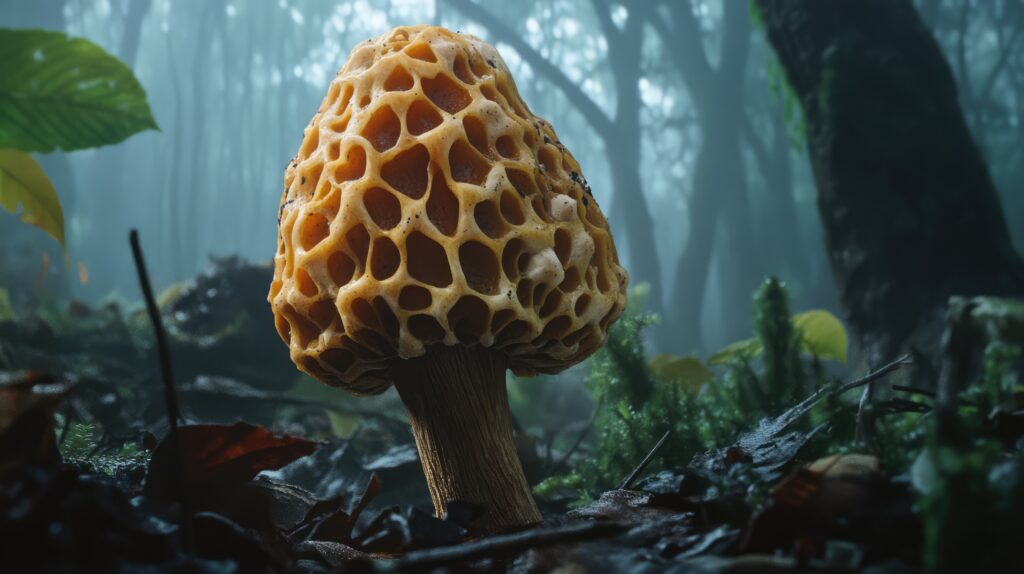
Terence Monmaney of Popular Science reports that in Montchavin, a small French Alps village, a troubling cluster of 14 ALS cases was discovered, raising suspicions about a link to the consumption of false morels, a toxic mushroom. Neurologist Emmeline Lagrange investigated and found that many of the ALS patients had consumed the mushroom for its supposed rejuvenating properties. False morels, particularly Gyromitra esculenta, are a delicacy in some regions but are linked to neurotoxicity. Researchers are exploring potential connections between the mushroom’s toxins and ALS, but no new cases have been reported recently in the village. Monmaney writes:
The road switches back and forth again and again as it climbs into Montchavin, perched in the French Alps at 4,100 feet above sea level. The once-sleepy mountainside village, developed into a ski resort in the 1970s, is dotted with wooden chalet-style condo buildings and situated in the midst of a vast downhill complex known as Paradiski, one of the world’s largest.
Well known to skiers and alpinistes, Montchavin also has grabbed the attention of medical researchers as the site of a highly unusual cluster of a devastating neurological disease, amyotrophic lateral sclerosis.
ALS, brought about by the progressive loss of nerve function in the brain, spinal cord and motor neurons in the limbs and chest, leading to paralysis and death, is both rare and rather evenly distributed across the globe: It afflicts two to three new people out of 100,000 per year. Though Montchavin is flooded with visitors in winter and summer, the year-round resident population is only a couple hundred, and neighboring villages aren’t much bigger, so the odds are strongly against finding more than just a few ALS patients in the immediate area. Yet physicians have reported 14.
The first of the village patients to arouse suspicion in Emmeline Lagrange, the neurologist who has led the investigation into the problem, was a woman in her late thirties, a ski instructor and ski lift ticket-checker originally from Poland who worked in the offseason at the local tourism office. It was 2009. […]
Neurologist Emmeline Lagrange discovered a concerning cluster of 16 ALS cases in the small village of Montchavin, spanning from 2009 to 2019. Upon investigation, Lagrange found that many of the patients had consumed false morels, a toxic mushroom known for its supposed rejuvenating properties. Half of the ALS patients had fallen ill after eating the mushrooms, prompting Lagrange and her team to study the link. They expanded their research with a control group and found a significant connection between consuming false morels, specifically Gyromitra esculenta, and the onset of ALS.
“It looks like something from an alien movie, but it’s delicious,” Kim Mikkola, then the chef of a Michelin-starred restaurant in Helsinki, said in a 2020 video that showed him collecting and preparing false morels. He says the fungi do contain neurotoxins and demonstrates the detoxification process. “If treated right it’s very good, acidic and a bit nutty. It has that kind of forest mushroom flavor … a very elegant delicacy.”
False morels, particularly Gyromitra esculenta, are considered a delicacy in parts of North America and Scandinavia. However, experts warn that consuming them is dangerous due to their toxicity, with some studies linking them to neurodegenerative diseases like ALS. A Michigan-based team raised concerns about the chronic effects of gyromitrin exposure, especially in areas with high ALS prevalence. Despite the challenges of establishing a direct link between consumption and disease, researchers are investigating these connections through animal testing.
For now, she says in a Zoom interview, “I think I did the job. I’m just a little doctor” — she holds her thumb and forefinger about an inch apart — “worried about the possibility of new cases in the village.”
And there have been no new cases of ALS, she says. “Hopefully, there’s no more.”
Read more here.



